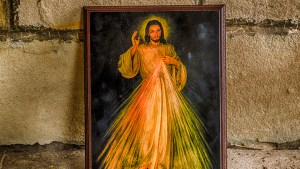Christ himself asked Sr. Faustina Kowalska to have this picture painted, appearing to her as depicted on the evening of February 22, 1931, in a convent in Płock, Poland.
Under the direction of the author of the Diary, Eugeniusz Kazimirowski, an artist from Vilnius, attempted to immortalize the vision on canvas in 1934. Faustina was not satisfied with the result. Then she heard from the Savior, “It is not the beauty of the paint nor of the brush, but my grace that makes this painting great” (Diary, 313).
Ten years later, Jesuit Fr. Joseph Andrash, the mystic’s confessor and spiritual director, solemnly consecrated the most famous version of the painting, which was painted by Adolf Hyla. It’s the image venerated today in the convent chapel of the Congregation of the Sisters of Our Lady of Mercy in Kracow-Lagiewniki. Copies and reproductions of it can be found everywhere.
In less than a century, the Divine Mercy devotion has spread and taken root all around the globe. Here are some examples of images and shrines, from humble prints to great statues.
At a shoeshine stand in Lima
In one of Lima’s neighborhoods, on a street that residents walk through to reach the market in the square, I spotted a little shrine with a statue of Divine Mercy. In an arcade near the main square of Peru’s capital, I saw a picture of the Divine Mercy at the station of a shoe shiner. The old man was taking a nap, waiting for more customers.
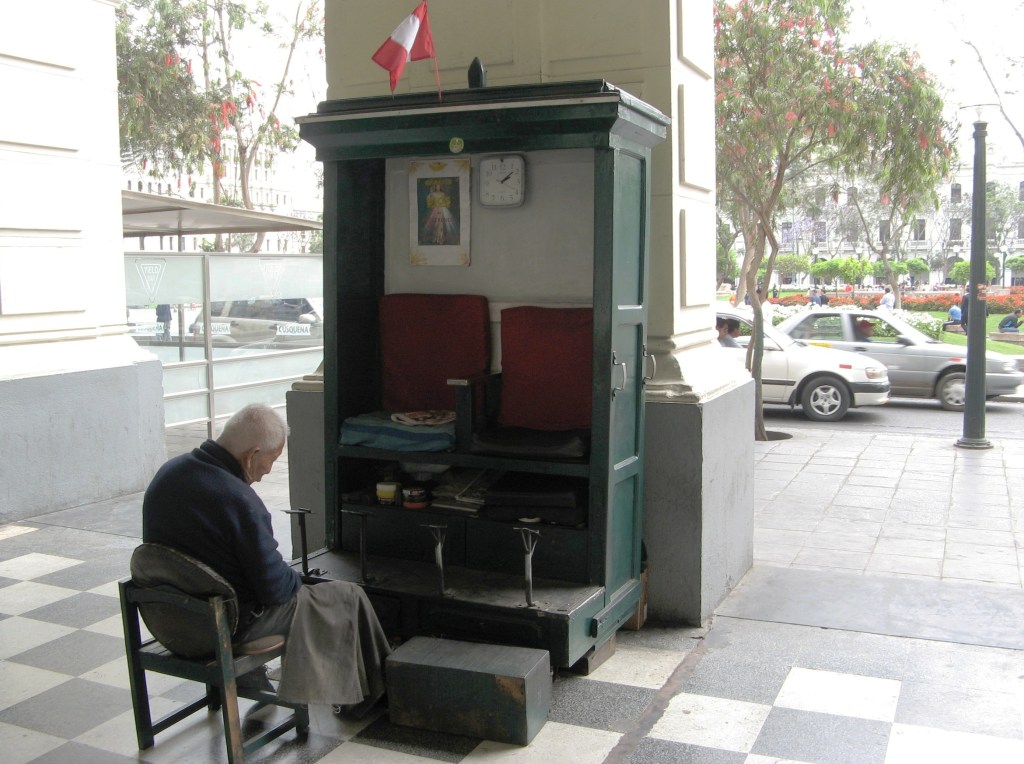
On Sunday in the same city, I attended Mass at the archdiocesan Shrine of Divine Mercy. A commemorative plaque on the wall of the shrine thanks the founder and pastor of the parish, who served here from 1994 to 2006.
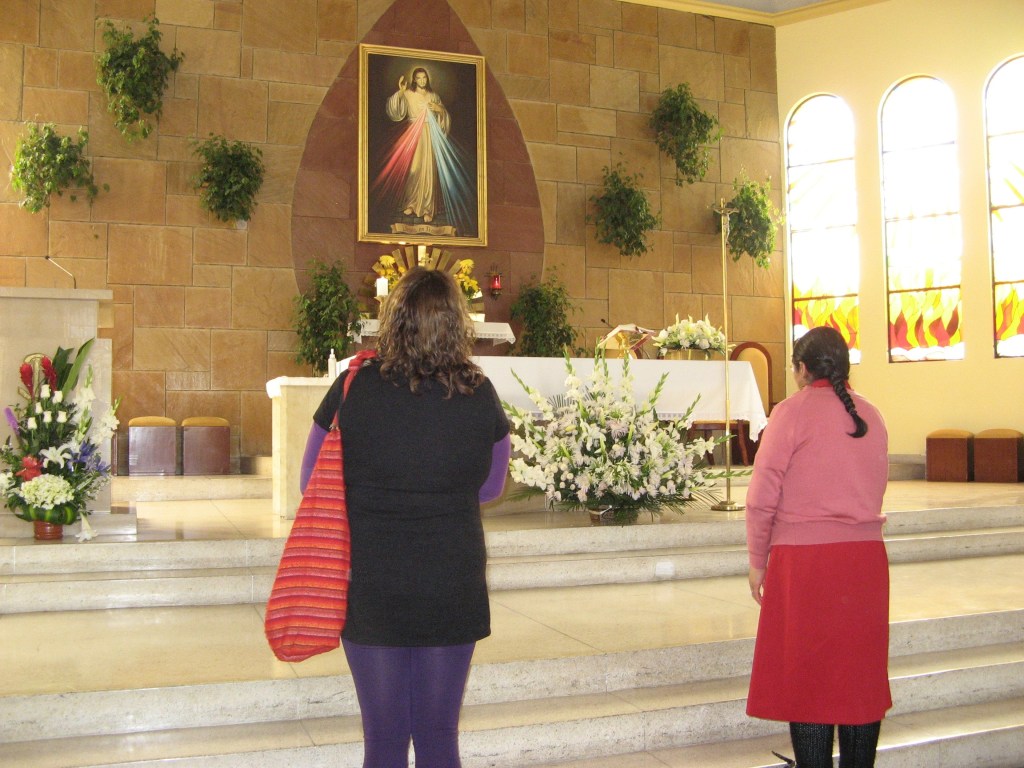
In the heart of Africa
“Yesu, Ndikukhulupirira Inu” — this is how the Chichewa dictionary translates the phrase “Jesus I trust in you.” Easy to pronounce, right? The painting — or rather a large print — was delivered in 2005 to Malawi, which is materially poor but rich in human kindness.
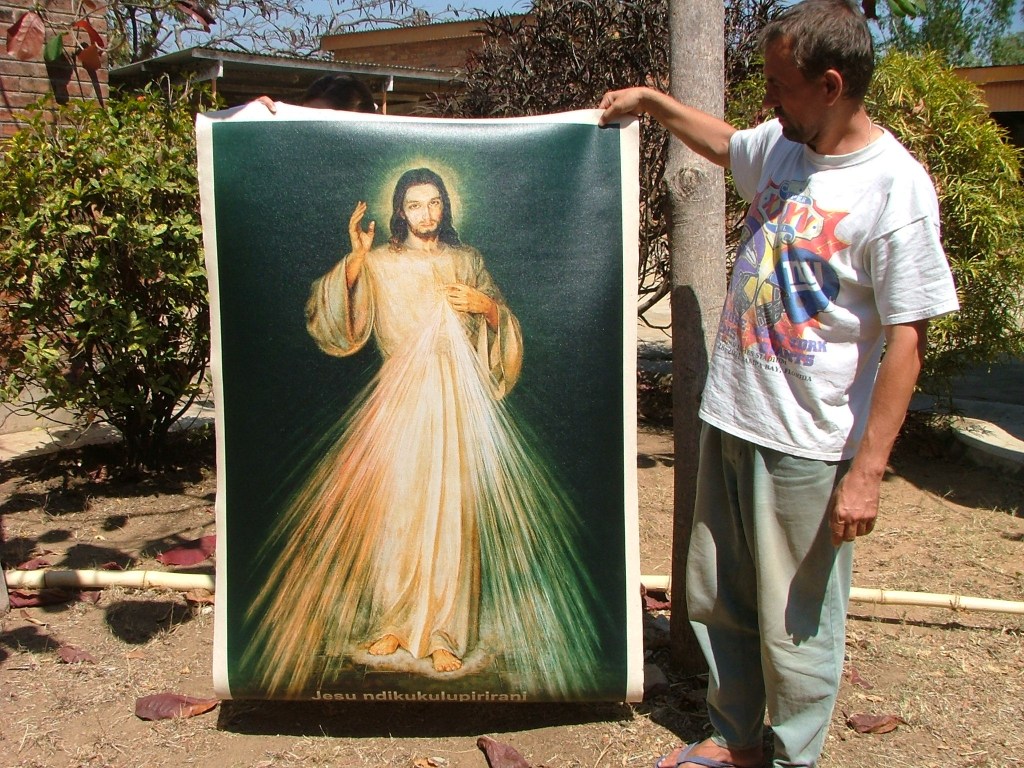
Funded by Polish donors, the image had more than one typo in its caption, and the word “You” was missing. Well, there was no online dictionary in Chichewa back then … So they came up with the idea that the erroneous inscription would be obscured by a frame on which locals would carve the correct text.
Fr. Paweł, a Polish missionary, was happy that his sheep would have Someone to resort to….
From buildings to T-shirts
A large image of Divine Mercy sometimes looks out from the facades of buildings in Polish cities, such as in Koszalin or Krakow (in the latter, thanks to the Daughters of Charity). They displayed it on the occasion of the Corpus Christi procession, and there it has remained.
“Passersby react very well,” explains one of the sisters. In fact, there are a bus stop and a train station in front, and the Divine Mercy is a comforting sight! Knowing that someone is watching over you gives you more security in life.
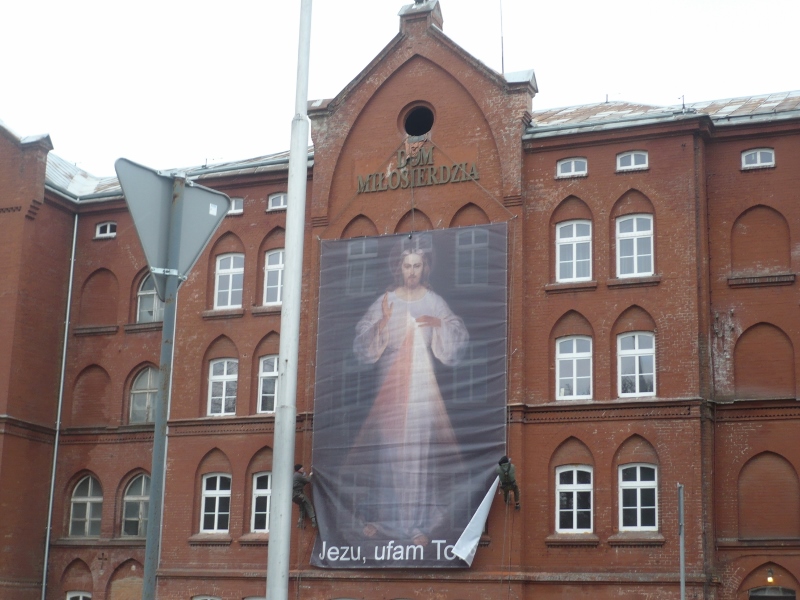
A drawing alluding to the image of Divine Mercy also adorns the T-shirts of participants in the annual seaside evangelization held at the Baltic Sea. For several days, carrying no money or accommodation, they preach the Gospel to beachgoers and trust in God’s providence. Jesus speaks before the evangelizers open their mouths.
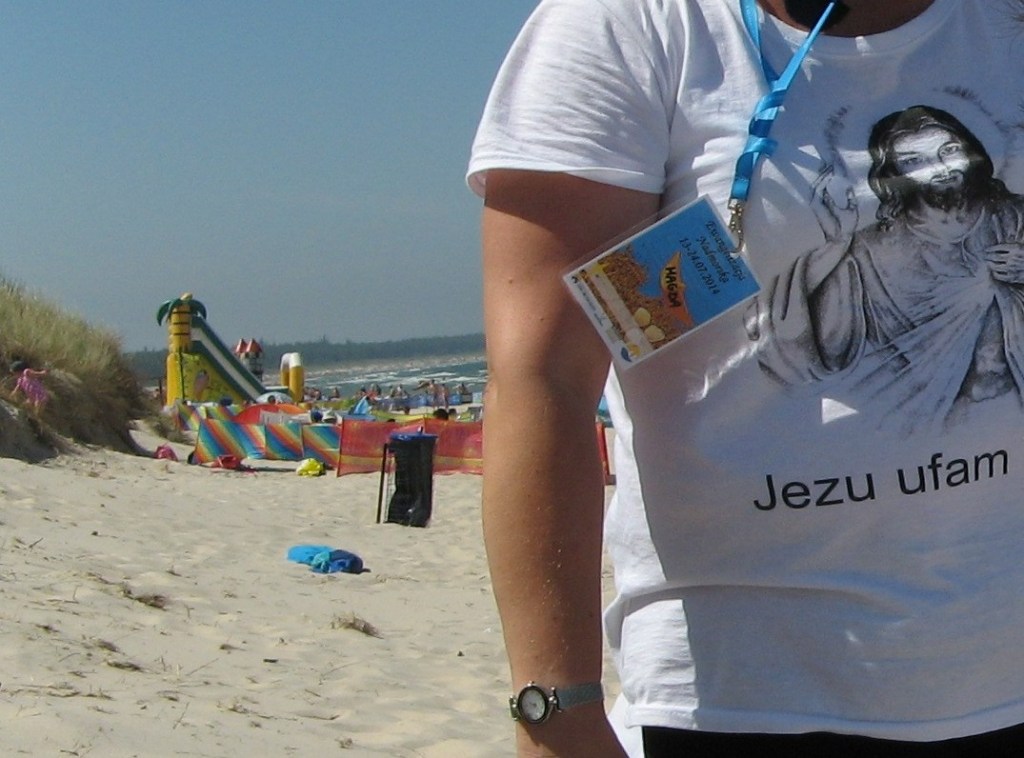
On the street in Chicago
There is a robust devotion to Divine Mercy in the USA as well, of course. In addition to the Divine Mercy Shrine in Stockbridge, Massachusetts, there are signs of the devotion in many places.
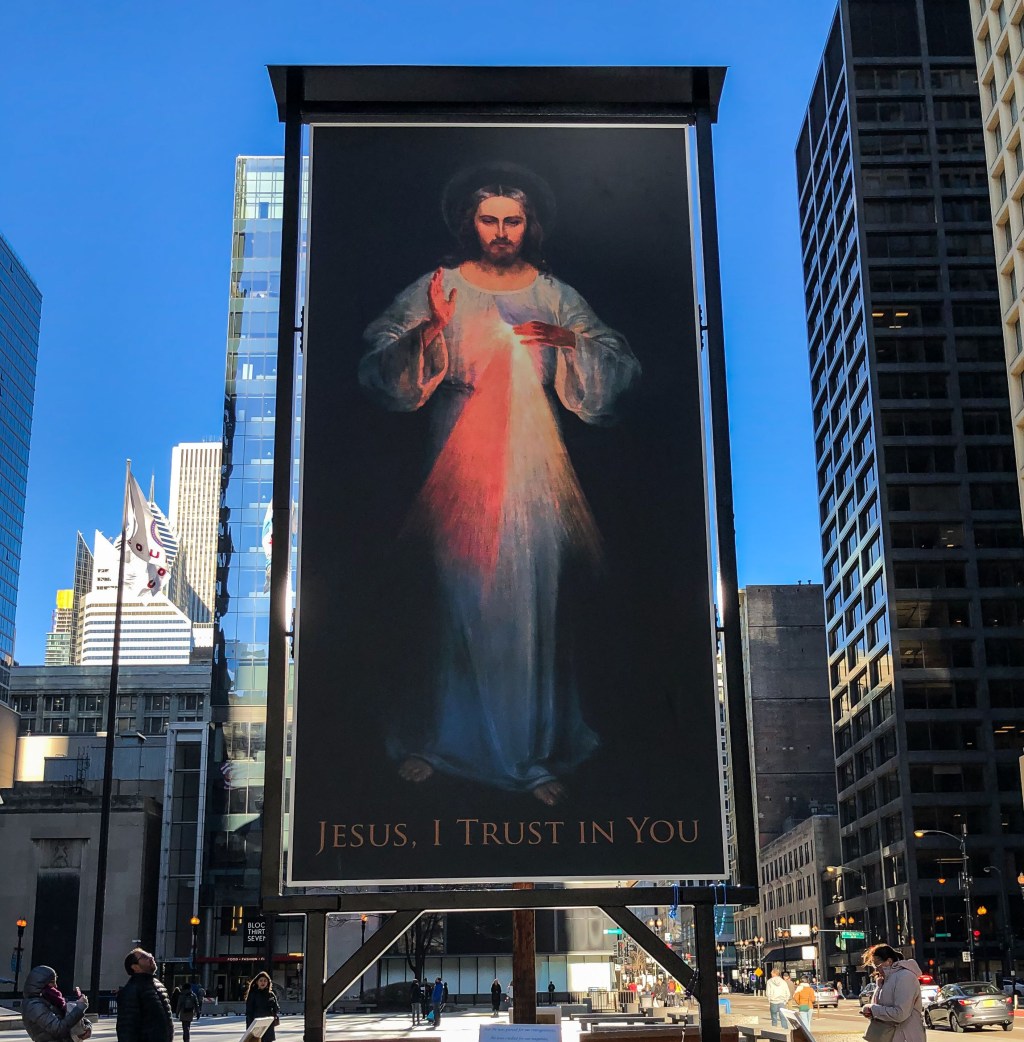
Shrine in Sri Lanka
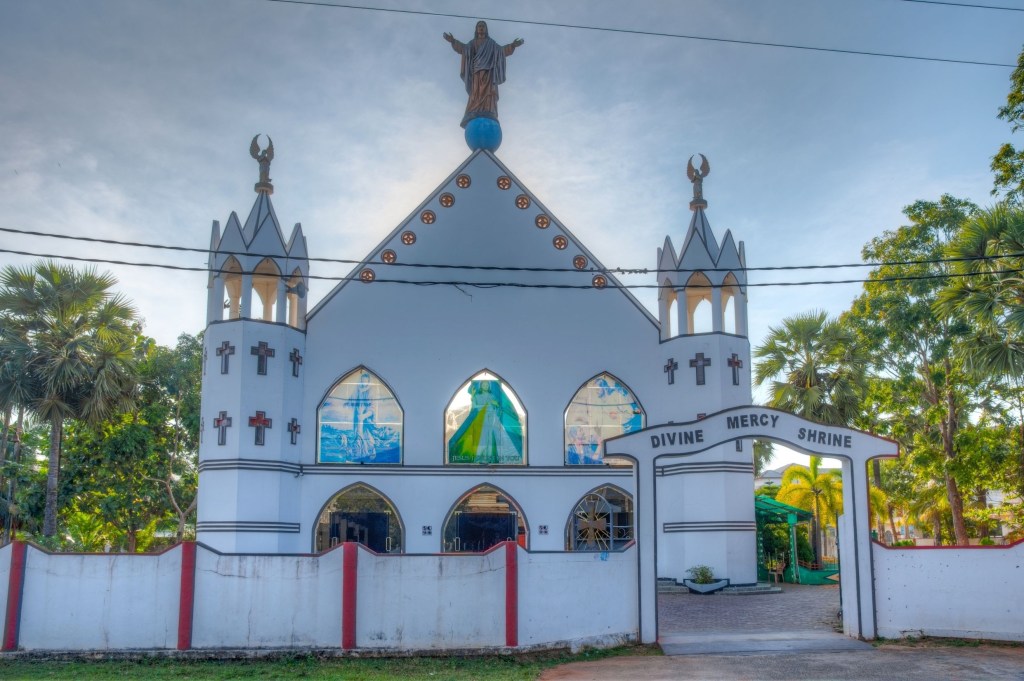
Christians may be less than 8% of the population in Sri Lanka, but they have their own Divine Mercy Shrine there, too.
The Philippines, of course
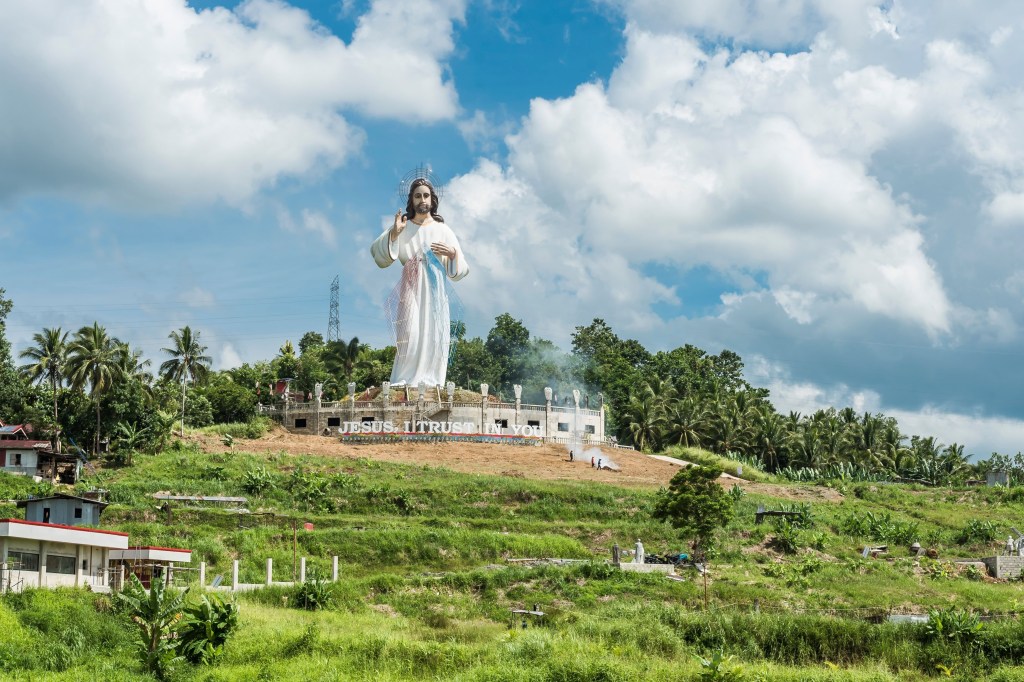
The Philippines is known for the fervent devotion of its Catholic population, so it’s no surprise there’s a monumental statue of Divine Mercy there.
Ways to have the Divine Mercy image with you
There are also a number of Catholic products that incorporate the Divine Mercy image.
One of the cutest might be the St. Faustina “Tiny Saint” seen here. And if you’re lucky enough to get on the waiting list of Oremus Crocheted Saints, her St. Faustina with the Divine Mercy is beautiful.
This is just a sampling of the many places the image of our Merciful Lord can be found. However, while it is salutary and a means of evangelization to have such images in public places, the most important thing is to trust in Divine Mercy in our own hearts.
